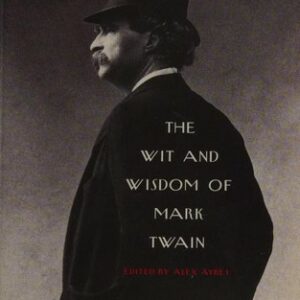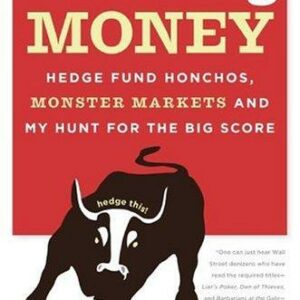Rationality
$18.00
| Title | Range | Discount |
|---|---|---|
| Trade Discount | 5 + | 25% |
- Description
- Additional information
Description
NEW YORK TIMES BESTSELLER
“In our uncertain age, which can so often feel so dark and disturbing, Steven Pinker has distinguished himself as a voice of positivity.” – New York Times
Can reading a book make you more rational? Can it help us understand why there is so much irrationality in the world? Steven Pinker, author of Enlightenment Now (Bill Gates’s “new favorite book of all time”) answers all the questions here
Today humanity is reaching new heights of scientific understanding–and also appears to be losing its mind. How can a species that developed vaccines for Covid-19 in less than a year produce so much fake news, medical quackery, and conspiracy theorizing?
Pinker rejects the cynical cliché that humans are simply irrational–cavemen out of time saddled with biases, fallacies, and illusions. After all, we discovered the laws of nature, lengthened and enriched our lives, and set out the benchmarks for rationality itself. We actually think in ways that are sensible in the low-tech contexts in which we spend most of our lives, but fail to take advantage of the powerful tools of reasoning we’ve discovered over the millennia: logic, critical thinking, probability, correlation and causation, and optimal ways to update beliefs and commit to choices individually and with others. These tools are not a standard part of our education, and have never been presented clearly and entertainingly in a single book–until now.
Rationality also explores its opposite: how the rational pursuit of self-interest, sectarian solidarity, and uplifting mythology can add up to crippling irrationality in a society. Collective rationality depends on norms that are explicitly designed to promote objectivity and truth.
Rationality matters. It leads to better choices in our lives and in the public sphere, and is the ultimate driver of social justice and moral progress. Brimming with Pinker’s customary insight and humor, Rationality will enlighten, inspire, and empower.”Erudite, lucid, funny and dense with fascinating material . . . A pragmatic dose of measured optimism, presenting rationality as a fragile but achievable ideal in personal and civic life. . . . It’s no small achievement to make formal logic, game theory, statistics and Bayesian reasoning delightful topics full of charm and relevance.”—The Washington Post
“An impassioned and zippy introduction to the tools of rational thought… Punchy, funny and invigorating.”—The Times (London)
“An engaging analysis of the highest of our faculties and perhaps (ironically) the least understood” —The Wall Street Journal
“If you’ve ever considered taking drugs to make yourself smarter, read Rationality instead.”—Jonathan Haidt, New York Times bestselling co-author of THE CODDLING OF THE AMERICAN MIND
“Pinker manages to be scrupulously rigorous yet steadily accessible and entertaining whether probing the rationality of Andrew Yang’s presidential platform, Dilbert cartoons, or Yiddish proverbs. The result is both a celebration of humans’ ability to make things better with careful thinking and a penetrating rebuke to muddleheadedness”—Publishers Weekly (starred)
“A reader-friendly primer in better thinking through the cultivation of that rarest of rarities: a sound argument.”—Kirkus ReviewsSteven Pinker is the Johnstone Professor of Psychology at Harvard University. A two-time Pulitzer Prize finalist and the winner of many awards for his research, teaching, and books, he has been elected to the National Academy of Sciences and named one of Time‘s 100 Most Influential People and one of Foreign Policy‘s 100 Leading Global Thinkers. His books include The Blank Slate, The Stuff of Thought, The Better Angels of Our Nature, The Sense of Style, and Enlightenment Now.
1
How Rational an Animal?
Man is a rational animal. So at least we have been told. Throughout a long life I have searched diligently for evidence in favor of this statement. So far, I have not had the good fortune to come across it.
-Bertrand Russell
He that can carp in the most eloquent or acute manner at the weakness of the human mind is held by his fellows as almost divine.
-Baruch Spinoza
Homo sapiens means wise hominin, and in many ways we have earned the specific epithet of our Linnaean binomial. Our species has dated the origin of the universe, plumbed the nature of matter and energy, decoded the secrets of life, unraveled the circuitry of consciousness, and chronicled our history and diversity. We have applied this knowledge to enhance our own flourishing, blunting the scourges that immiserated our ancestors for most of our existence. We have postponed our expected date with death from thirty years of age to more than seventy (eighty in developed countries), reduced extreme poverty from ninety percent of humanity to less than nine, slashed the rates of death from war twentyfold and from famine a hundredfold. Even when the ancient bane of pestilence rose up anew in the twenty-first century, we identified the cause within days, sequenced its genome within weeks, and administered vaccines within a year, keeping its death toll to a fraction of those of historic pandemics.
The cognitive wherewithal to understand the world and bend it to our advantage is not a trophy of Western civilization; it’s the patrimony of our species. The San of the Kalahari Desert in southern Africa are one of the world’s oldest peoples, and their foraging lifestyle, maintained until recently, offers a glimpse of the ways in which humans spent most of their existence. Hunter-gatherers don’t just chuck spears at passing animals or help themselves to fruit and nuts growing around them. The tracking scientist Louis Liebenberg, who has worked with the San for decades, has described how they owe their survival to a scientific mindset. They reason their way from fragmentary data to remote conclusions with an intuitive grasp of logic, critical thinking, statistical reasoning, causal interference, and game theory.
The San engage in persistence hunting, which puts to use our three most conspicuous traits: our two-leggedness, which enables us to run efficiently; our hairlessness, which enables us to dump heat in hot climates; and our big heads, which enable us to be rational. The San deploy this rationality to track the fleeing animals from their hoofprints, effluvia, and other spoor, pursuing them until they keel over from exhaustion and heat stroke. Sometimes the San track an animal along one of its habitual pathways, or, when a trail goes cold, by searching in widening circles around the last known prints. But often they track them by reasoning.
Hunters distinguish dozens of species by the shapes and spacing of their tracks, aided by their grasp of cause and effect. They may infer that a deeply pointed track comes from an agile springbok, which needs a good grip, whereas a flat-footed track comes from a heavy kudu, which has to support its weight. They can sex the animals from the configuration of their tracks and the relative location of their urine to their hind feet and droppings. They use these categories to make syllogistic deductions: steenbok and duiker can be run down in the rainy season because the wet sand forces open their hooves and stiffens their joints; kudu and eland can be run down in the dry season because they tire easily in loose sand. It’s the dry season and the animal that left these tracks is a kudu; therefore, this animal can be run down.
The San don’t just pigeonhole animals into categories but make finer-grained logical distinctions. They tell individuals apart within a species by reading their hoofprints, looking for telltale nicks and variations. And they distinguish an individual’s permanent traits, like its species and sex, from transient conditions like fatigue, which they infer from signs of hoof-dragging and stopping to rest. Defying the canard that premodern peoples have no concept of time, they estimate the age of an animal from the size and crispness of its hoofprints, and can date its spoor by the freshness of tracks, the wetness of saliva or droppings, the angle of the sun relative to a shady resting place, and the palimpsest of superimposed tracks from other animals. Persistence hunting could not succeed without those logical niceties. A hunter can’t track just any gemsbok from among the many that have left tracks, but only the one he has been pursuing to exhaustion.
The San also engage in critical thinking. They know not to trust their first impressions, and appreciate the dangers of seeing what they want to see. Nor will they accept arguments from authority: anyone, including a young upstart, may shoot down a conjecture or come up with his own until a consensus emerges from the disputation. Though it’s mainly the men who hunt, the women are just as knowledgeable at interpreting spoor, and Liebenberg reports that one young woman, !Nasi, “put the men to shame.”
The San adjust their credence in a hypothesis according to how diagnostic the evidence is, a matter of conditional probability. A porcupine foot, for instance, has two proximal pads while a honey badger has one, but a padprint may fail to register on hard ground. This means that though the probability that a track will have one padprint given that it was made by a honey badger is high, the inverse probability, that a track was made by a honey badger given that it has one padprint, is lower (since it could also be an incomplete porcupine track). The San do not confuse these conditional probabilities: they know that since two padprints could only have been left by a porcupine, the probability of a porcupine given two padprints is high.
The San also calibrate their credence in a hypothesis according to its prior plausibility. If tracks are ambiguous, they will assume they come from a commonly occurring species; only if the evidence is definitive will they conclude that they come from a rarer one. As we shall see, this is the essence of Bayesian reasoning.
Another critical faculty exercised by the San is distinguishing causation from correlation. Liebenberg recalls: “One tracker, Boroh//xao, told me that when the [lark] sings, it dries out the soil, making the roots good to eat. Afterwards, !Nate and /Uase told me that Boroh//xao was wrong-it is not the bird that dries out the soil, it is the sun that dries out the soil. The bird is only telling them that the soil will dry out in the coming months and that it is the time of the year when the roots are good to eat.”
The San use their knowledge of the causal texture of their environment not just to understand how it is but to imagine how it might be. By playing out scenarios in their mind’s eye, they can think several steps ahead of the animals in their world and devise intricate snares to trap them. One end of a springy branch is anchored in the ground and the stick is bent in half; the other is tied to a noose camouflaged with twigs and sand and held in place by a trigger. They place the snares at the openings of barriers they have built around an antelope’s resting place, and guide the animal into the deadly spot with a hurdle the antelope must clear. Or they lure an ostrich to a snare by spotting its tracks under a camelthorn tree (whose pods are an ostrich delicacy) and leaving a conspicuous bone that’s too big for the ostrich to swallow, which draws its attention to a smaller but still unswallowable bone, which leads to a still smaller bone, the bait in the snare.
Yet for all the deadly effectiveness of the San’s technology, they have survived in an unforgiving desert for more than a hundred thousand years without exterminating the animals they depend on. During a drought, they think ahead to what would happen if they killed the last plant or animal of its kind, and they spare the members of the threatened species. They tailor their conservation plans to the different vulnerabilities of plants, which cannot migrate but recover quickly when the rains return, and animals, which can survive a drought but build back their numbers slowly. And they enforce these conservation efforts against the constant temptation of poaching (everyone feeling they should exploit the scarce species, because if they don’t, everyone else will) with an extension of the norms of reciprocity and collective well-being that govern all their resources. It is unthinkable for a San hunter not to share meat with an empty-handed bandmate, or to exclude a neighboring band driven from their drought-stricken territory, since they know that memories are long and some day fortunes may reverse.
The sapience of the San makes the puzzle of human rationality acute. Despite our ancient capacity for reason, today we are flooded with reminders of the fallacies and follies of our fellows. People gamble and play the lottery, where they are guaranteed to lose, and fail to invest for their retirement, where they are guaranteed to win. Three quarters of Americans believe in at least one phenomenon that defies the laws of science, including psychic healing (55 percent), extrasensory perception (41 percent), haunted houses (37 percent), and ghosts (32 percent)-which also means that some people believe in houses haunted by ghosts without believing in ghosts. In social media, fake news (such as Joe Biden Calls Trump Supporters ÒDregs of SocietyÓ and Florida Man Arrested for Tranquilizing and Raping Alligators in the Everglades) is diffused farther and faster than the truth, and humans are more likely to spread it than bots.
It has become commonplace to conclude that humans are simply irrational-more Homer Simpson than Mr. Spock, more Alfred E. Neuman than John von Neumann. And, the cynics continue, what else would you expect from descendants of hunter-gatherers whose minds were selected to avoid becoming lunch for leopards? But evolutionary psychologists, mindful of the ingenuity of foraging peoples, insist that humans evolved to occupy the “cognitive niche”: the ability to outsmart nature with language, sociality, and know-how. If contemporary humans seem irrational, don’t blame the hunter-gatherers.
How, then, can we understand this thing called rationality which would appear to be our birthright yet is so frequently and flagrantly flouted? The starting point is to appreciate that rationality is not a power that an agent either has or doesn’t have, like Superman’s X-ray vision. It is a kit of cognitive tools that can attain particular goals in particular worlds. To understand what rationality is, why it seems scarce, and why it matters, we must begin with the ground truths of rationality itself: the ways an intelligent agent ought to reason, given its goals and the world in which it lives. These “normative” models come from logic, philosophy, mathematics, and artificial intelligence, and they are our best understanding of the “correct” solution to a problem and how to find it. They serve as an aspiration for those who want to be rational, which should mean everyone. A major goal of this book is to explain the most widely applicable normative tools of reason; they are the subjects of chapters 3 to 9.
Normative models also serve as benchmarks against which we can assess how human schlemiels do reason, the subject matter of psychology and the other behavioral sciences. The many ways in which ordinary people fall short of these benchmarks have become famous through the Nobel Prize-winning research of Daniel Kahneman, Amos Tversky, and other psychologists and behavioral economists. When people’s judgments deviate from a normative model, as they so often do, we have a puzzle to solve. Sometimes the disparity reveals a genuine irrationality: the human brain cannot cope with the complexity of a problem, or it is saddled with a bug that cussedly drives it to the wrong answer time and again.
But in many cases there is a method to people’s madness. A problem may have been presented to them in a deceptive format, and when it is translated into a mind-friendlier guise, they solve it. Or the normative model may itself be correct only in a particular environment, and people accurately sense that they are not in that one, so the model doesn’t apply. Or the model may be designed to bring about a certain goal, and, for better or worse, people are after a different one. In the chapters to come, we will see examples of all these extenuating circumstances. The penultimate chapter will lay out how some of today’s florid outbursts of irrationality may be understood as the rational pursuit of goals other than an objective understanding of the world.
Though explanations of irrationality may absolve people of the charge of outright stupidity, to understand is not to forgive. Sometimes we can hold people to a higher standard. They can be taught to spot a deep problem across its superficial guises. They can be goaded into applying their best habits of thinking outside their comfort zones. And they can be inspired to set their sights higher than self-defeating or collectively destructive goals. These, too, are aspirations of the book.
Since a recurring insight of the study of judgment and decision making is that humans become more rational when the information they’re dealing with is more vivid and relevant, let me turn to examples. Each of these classics-from math, logic, probability, and forecasting-exposes a quirk in our reasoning and will serve as a preview of the normative standards of rationality (and the ways in which people depart from them) in the chapters to come.
Three Simple Math Problems
Everyone remembers being tormented in high school by algebra problems about where the train that left Eastford traveling west at 70 miles per hour will meet the train that left Westford, 260 miles away, traveling east at 60 miles per hour. These three are simpler; you can do them in your head:
A smartphone and a case cost $110 in total. The phone costs $100 more than the case. How much does the case cost?
It takes 8 printers 8 minutes to print 8 brochures. How long would it take 24 printers to print 24 brochures?
On a field there is a patch of weeds. Every day the patch doubles in size. It takes 30 days for the patch to cover the whole field. How long did it take for the patch to cover half the field?
The answer to the first problem is $5. If you’re like most people, you guessed $10. But if that were right, the phone would cost $110 ($100 more than the case), and the total for the pair would be $120.
US
Additional information
| Weight | 13.8 oz |
|---|---|
| Dimensions | 0.8600 × 5.5100 × 8.4200 in |
| Imprint | |
| ISBN-13 | |
| Author | |
| Audience | |
| BISAC | |
| Subjects | behavioral psychology, mental health books, history books, reference, sci-fi, science books, essays, SCI075000, science gifts, science book, psychology books, sociology books, science gifts for adults, science books for adults, philosophy books, psychology book, social psychology, audiobooks, audible books, steven pinker books, self help, philosophy, self improvement, inspirational, gift, culture, mental health, psychology, spirituality, business, history, science, health, social, leadership, SOC026040, behavior, Sociology, Human nature, Brain |
| Format |











